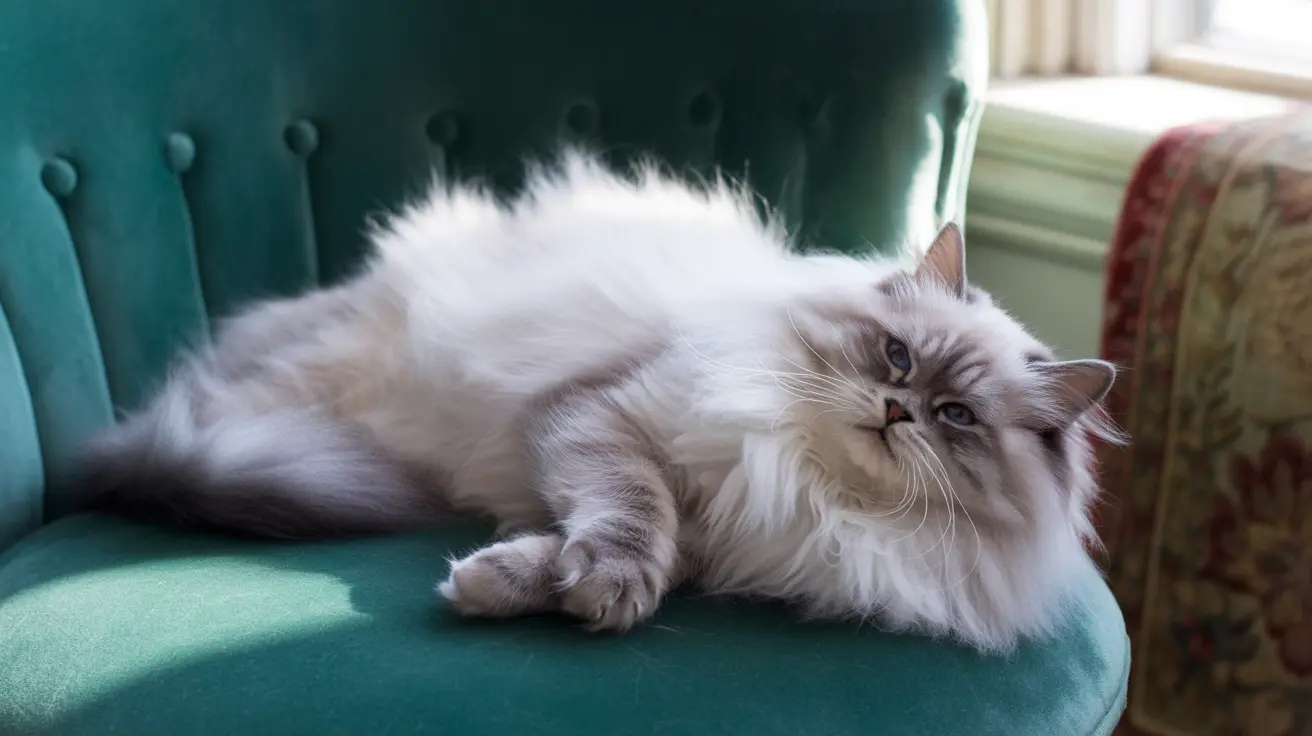The Science Behind Sleep Twitching in Cats
Just like humans, cats experience different sleep stages, including REM (Rapid Eye Movement) sleep. During REM sleep, which occurs approximately every 25-30 minutes, cats' brains are highly active, leading to various physical manifestations.
Adult cats typically spend 12-16 hours sleeping each day, with about 40% of that time in deep or REM sleep. This explains why you might frequently observe twitching behaviors in your sleeping cat.
Normal Sleep Movements in Cats
Common sleep-related movements in cats include:
- Whisker twitching
- Paw paddling or "running" motions
- Tail flicking
- Ear movements
- Soft vocalizations
- Facial expressions
These movements are particularly common during REM sleep and often represent your cat's brain processing daily experiences or "practicing" hunting behaviors.
Why Kittens Twitch More Frequently
Kittens experience more frequent and pronounced sleep twitching compared to adult cats. This increased activity serves a crucial developmental purpose, helping to strengthen neural pathways and develop motor skills.
Young cats may spend up to 60% of their sleep time in REM sleep, significantly more than adult cats. This extended REM period supports their rapid physical and neurological development.
When to Be Concerned About Sleep Twitching
While most sleep twitching is normal, certain signs warrant veterinary attention:
- Twitching that occurs while awake
- Violent or prolonged movements
- Drooling or loss of bladder control
- Confusion upon waking
- Full-body convulsions
- Rigid muscles during episodes
How to Support Healthy Cat Sleep
To ensure your cat gets quality rest:
- Provide a comfortable, quiet sleeping area
- Maintain regular feeding and play schedules
- Don't wake your cat during REM sleep
- Monitor sleep patterns for any concerning changes
- Keep up with regular veterinary check-ups
Frequently Asked Questions
Why does my cat twitch in their sleep and is it normal?
Cat twitching during sleep is completely normal and usually indicates your cat is in REM sleep, where dreaming occurs. These movements are similar to humans moving during dreams and are part of healthy sleep patterns.
What does twitching during REM sleep mean for kittens versus adult cats?
Kittens twitch more frequently during sleep because they spend more time in REM sleep, which is crucial for their neurological development. Adult cats still twitch but less often, as their nervous systems are fully developed.
How can I tell the difference between normal sleep twitching and seizures in my cat?
Normal sleep twitching is brief, occurs only during sleep, and stops when the cat wakes up. Seizures typically involve more violent movements, can happen while awake, and may include drooling, confusion, or loss of bladder control.
Could my cat's twitching be caused by skin issues like fleas or allergies?
While sleep twitching is usually normal, skin irritations can cause muscle twitching both during sleep and while awake. If your cat shows signs of skin discomfort or excessive grooming, consult your veterinarian.
When should I consult a veterinarian about my cat's twitching in sleep?
Seek veterinary care if your cat's twitching is violent, occurs while awake, is accompanied by other symptoms like drooling or confusion, or if there's a sudden increase in frequency or intensity of sleep movements.
Conclusion
Cat twitching in sleep is typically a sign of healthy brain activity and normal sleep patterns. Understanding these behaviors can help you better care for your feline friend and know when to seek professional advice. Remember that each cat is unique, and what's normal for one may differ from another.






